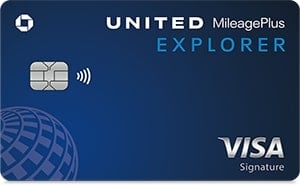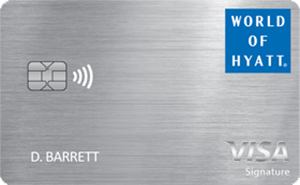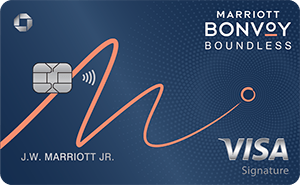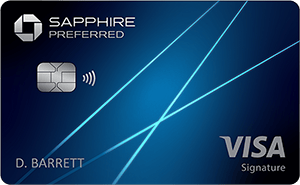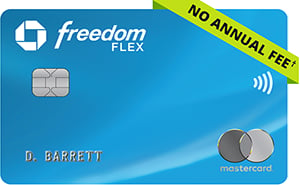A Beginner’s Guide to Traveling on Points and Miles
Ready to get started with points and miles? Here's what you need to know.

Many or all of the products on this page are from partners who compensate us when you click to or take an action on their website, but this does not influence our evaluations or ratings. Our opinions are our own.
Welcome to the world of miles and points! This guide is your roadmap to understanding airline miles, hotel points and credit card rewards. Whether you’re dreaming of first-class flights, luxury hotels or simply free travel to visit loved ones, we’ll demystify the best ways to earn and redeem miles and points.
» Learn more: The best travel credit cards might surprise you
Win Private Travel 'AMA' ($250 value)
Get the ‘cheat codes’ to using travel points and miles so you can spend less cash. 📥 Sign up for our free newsletter before Jan. 4 and enter to win a 1:1 travel rewards coaching session.
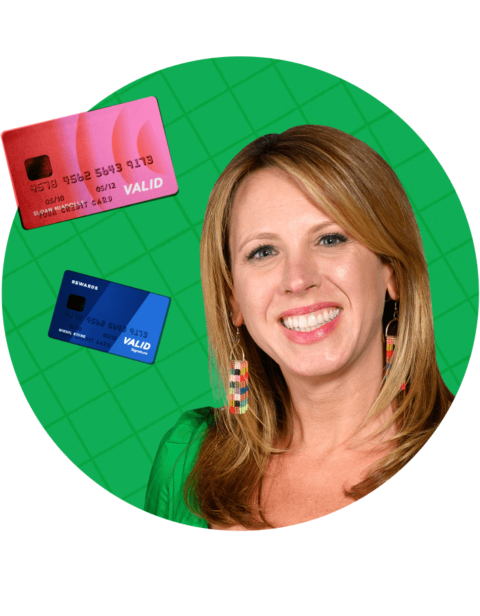
1. Define your travel goals
Before diving into miles and points, think about what you want to achieve. That could be a more general goal, like one of the following:
- Exotic trips in first class: Fly internationally using miles and stay in luxury hotels on points.
- Family visits: Use miles for simple economy flights to see loved ones.
- Take vacations for free or cheap: Gain lounge access, maximize free night certificates and optimize bookings for free breakfast to travel more frugally.
From there, you might pin down specific destinations. If your family lives in Atlanta, focus your mileage earning on Delta SkyMiles (given that Atlanta is a Delta hub). If Japan is your dream destination, prioritize earning credit card points that will transfer to an airline that partners with All Nippon Airways or Japan Airlines.
With an understanding of your goals (and where you'll travel), you can better focus your strategy in the next steps.
» Learn more: Are travel credit cards worth it?
2. Understand the different types of points and miles
» Learn more: What are travel points worth and why do they matter?
Think of miles and points as another form of currency. Just like dollars, euros or even Bitcoin, each travel program currency has its own rules and values.
Many points and miles are worth roughly a cent apiece, but not always. 100,000 points in one program can sometimes only be half as valuable as 100,0000 points in another.
There are three types of travel rewards: airline miles, hotel points and transferable points. Here’s a quick breakdown of each:
Airline miles
Airline miles are specific to each airline. They're usually earned by flying with that airline or spending with the airline's co-branded credit cards.
For example, you might earn United MileagePlus miles through flying with United (or another Star Alliance airline — more on alliances later). The number of miles earned on a flight depends on factors including the type of seat you book, distance flown and cost of the ticket.
Or, you might use one of United's co-branded credit cards, such as the United℠ Explorer Card, which earns United miles every time the card is swiped. Some purchases earn more miles than others. For instance, the United℠ Explorer Card earns 2 United miles per $1 on restaurants and hotels, and 1 United mile per dollar on everything else. Then, you can redeem miles for award tickets on that airline (and its partners).
Now each loyalty program has its own pros and cons. Some of those pros are based on your location and whether that airline serves your airport. Others are based around fees. For example, some don't charge close-in fees, which are additional charges that some airlines add to award tickets when they are booked close to the departure date.
Here are some of the biggest frequent flyer programs, and their notable qualities.
Popular domestic airline frequent flyer programs
- Alaska Airlines Mileage Plan: Great for West Coast travel and award tickets on Cathay Pacific to Asia.
- American Airlines AAdvantage: Useful for low award rates to Europe in the fall and winter.
- Delta SkyMiles: Good for last-minute bookings; no “close-in fees” for tickets booked less than 21 days before travel.
- Southwest Airlines Rapid Rewards: Generally good award availability and straightforward pricing (award prices tied directly to cash fares).
- United MileagePlus: Usually has the highest award availability due to Star Alliance membership.
Popular international airline frequent flyer programs
- Air Canada Aeroplan: No 21-day close-in booking fees.
- Air France/KLM FlyingBlue: Offers discounted monthly Promo Rewards.
- British Airways Executive Club: Distance-based award chart makes it great for short-haul award flights.
- Virgin Atlantic Flying Club: Excellent premium economy experience for low number of miles (despite high taxes).
Hotel points
Like airline miles, hotel points are earned via paid hotel stays or by using that hotel chain’s co-branded credit card. Some of these cards offer bonus points in certain categories. For example, the World of Hyatt Credit Card earns 2 points per dollar spent at fitness clubs or on gym memberships.
And many offer big bonus points on spending at that actual hotel brand. For example, the Marriott Bonvoy Boundless® Credit Card earns up 17 total points per dollar spent at over 7,000 participating Marriott hotels.
Hotel points are sometimes redeemable for things like gift cards (and can sometimes be transferred to airlines), but they're generally most valuable when used to book rooms.
Some hotel chains offer incentives to spend even more points by staying longer. For example, with Marriott you can book four award nights and get the fifth night free.
Popular hotel rewards programs
Transferable credit card points
Transferable points are the most flexible type of travel rewards currency, earned through spending on travel credit cards such as the Chase Sapphire Reserve® and Capital One Venture X Rewards Credit Card. Examples of transferable points include:
These points tend to offer multiple redemption options, such as gift cards, cash back or by transferring to specific hotel or airline partners. And those transfers can sometimes make for the best redemption.
For example, a Chase Ultimate Rewards point is worth just 1 cent when exchanged for cash. But they transfer 1:1 to World of Hyatt. Considering NerdWallet values Hyatt points at 1.8 cents each, that's a much better redemption (assuming you'd stay at a Hyatt anyway).
3. Know the best airline and hotel rewards programs

If you're not already committed to an airline or hotel program and are open to which one you pledge loyalty to, you might as well go for the one that's the best.
As part of our annual Best-Ofs Awards initiative, NerdWallet performs a comprehensive, domestic industry-wide analysis of airlines and hotels to find the best rewards programs.
The Alaska Airlines Mileage Plan scored the top spot in our rankings of the best airline loyalty program for 2025. Here's how all the big frequent flyer programs stack up:
On the hotel side of things, Hyatt also repeated as the best hotel rewards program.
Of course, the best awards program for you might not ladder up perfectly to our recommendations. If you have more access to certain brands (i.e. live near a Southwest hub) or prefer to stay at a Marriott, for instance, take that into account before selecting loyalty.
4. Get your financial house in order
If you intend to apply for travel credit cards to earn more rewards, adhere to these credit card best practices:
Know your credit score
Your credit score is a figure that represents a variety of factors: payment history, credit utilization, length of credit history, mix of credit types and recent applications.
For the most part, travel rewards credit cards are available only to those with excellent credit scores (720 and up). If your credit score is significantly below 720, first take steps to improve it.
Pay bills in full each month
If you don't pay your bills in full, you'll owe interest on your outstanding balance. Interest on travel credit cards is generally quite high.
Paying interest to earn travel rewards negates the value you’d derive from earning points. Remember, this is supposed to be a fun way to save money and travel the world for nearly free — it should not put you in debt.
Limit your cash usage
The more you spend, the more rewards you earn. Rather than artificially increase spending, simply make it a habit to only use a credit card that earns travel rewards (and avoid using cash or your debit card).
» Learn more: How do travel credit cards work?
5. Tap into easy ways to earn points
Earn credit card welcome bonuses
Credit card sign-up bonuses are a fast way to rack up rewards. Sign-up bonuses can sometimes exceed 100,000 points, depending on the offer.
With sign-up bonuses, you typically need to spend a certain amount within a limit period of time. Usually, a higher offer corresponds to a higher minimum spending requirement. Align your credit card application with a big purchase, like new furniture (or even a vacation) to maximize your odds of actually meeting the sign-up bonus. As a rule of thumb, an offer of 50,000 points/miles or more is considered a “good” offer.
» Learn more: The best travel credit card bonus offers available now
Airline credit cards
- Alaska Airlines: The Atmos™ Rewards Ascent Visa Signature® credit card earns 3 points for every $1 spent on eligible Alaska Airlines and Hawaiian Airline purchases, 2 points for every $1 spent on eligible gas, EV charging station, cable, streaming services, and local transit including ride share purchases, and 1 point for every $1 spent on all other purchases.
- United Airlines: The United Club℠ Card has a high annual fee: $695. Despite the high annual fee, the card offers 4 United miles per $1 on United purchases, 2 United miles per $1 on restaurants and travel, a United Club membership, a $120 statement credit toward Global Entry, and much more.
» Learn more: NerdWallet’s best airline credit cards
Hotel credit cards
- Marriott Bonvoy: Here’s the current offer on the Marriott Bonvoy Boundless® Credit Card: Earn 3 Free Nights (each night valued up to 50,000 points) after spending $3,000 on eligible purchases within 3 months of account opening with your Marriott Bonvoy Boundless® Credit Card. Certain hotels have resort fees. The card also comes with an annual free night certificate worth up to 35,000 points and a ton of other perks. The annual fee is $95 and not waived in the first year.
- Hilton Honors: The Hilton Honors American Express Business Card provides another excellent offer: Limited Time Offer: Earn 175,000 Hilton Honors Bonus Points after you spend $8,000 in purchases on the Hilton Honors American Express Business Card in your first 6 months of Card Membership. Offer Ends 1/14/2026. Terms Apply. The annual fee is $195 and is not waived in the first year. With this card, you’ll earn 12 points per $1 on Hilton purchases and 5 points on the first $100,000 in other purchases in a calendar year (and 3 points per $1 thereafter). Terms apply. If Hilton hotels are your thing, this is a great card to have. To view rates and fees of The Hilton Honors American Express Business Card, see this page.
» Learn more: NerdWallet’s best hotel credit cards
Transferable point credit cards
- Chase Ultimate Rewards®: Here’s the current offer on the Chase Sapphire Preferred® Card: Earn 75,000 bonus points after you spend $5,000 on purchases in the first 3 months from account opening. On this card, you’ll earn 2 points per $1 on travel (5 points per $1 if you book travel through Chase' travel portal), 3 points per $1 dining at restaurants worldwide, select streaming services and online grocery purchases (excluding Target, Walmart and wholesale clubs) and 1 point per dollar on all other purchases. The card has a $95 annual fee that is not waived in the first year.
- American Express Membership Rewards: The American Express Platinum Card® currently has the following welcome offer: You may be eligible for as high as 175,000 Membership Rewards® Points after you spend $8,000 in eligible purchases on your new Card in your first 6 months of Card Membership. Welcome offers vary and you may not be eligible for an offer. Terms apply. With this card, you’ll earn 5 Membership Rewards® points per $1 spent on flights and prepaid hotels booked on AmExtravel.com (on up to $500,000 per calendar year). You'll also get a $200 annual airline credit for incidentals (enrollment required)*, up to $200 a year in Uber Cash when you use your card to pay for U.S. Uber Eats orders or rides (enrollment required) and many other benefits. Although the annual fee is $895, the card provides various annual credits that offset the fee. Terms apply ( see rates and fees ). This is an excellent premium travel card.
- Citi ThankYou: The Citi Strata Premier® Card has the following signup offer: Earn 60,000 bonus ThankYou® Points after spending $4,000 in the first 3 months of account opening, redeemable for $600 in gift cards or travel rewards at thankyou.com. The annual fee is $95 and it is not waived for the first year. You will also earn 3 points per $1 at restaurants, supermarkets, gas stations, flights and hotels. The points can also be transferred to a number of airline and hotels programs, and there are no foreign transaction fees.
- Capital One Miles: The Capital One Venture Rewards Credit Card has the following welcome bonus: Enjoy a one-time bonus of 75,000 miles once you spend $4,000 on purchases within 3 months from account opening, equal to $750 in travel. The annual fee is $95. You earn 2 miles per $1 on all purchases and there are no foreign transaction fees. You will also receive a statement credit toward Global Entry or TSA PreCheck.
» Learn more: How to choose a travel credit card
Optimize spending category bonuses
Some credit cards offer bonus points for spending in a specific category. For example, the Chase Sapphire Preferred® Card earns bonus points on travel and dining at restaurants. So, if you hold this card along with another credit card, you’d probably use the Chase Sapphire Preferred® Card for all your travel and dining expenses.
Some cards offer rotating quarterly bonus categories. Though bonus categories can be annoying to keep track of, they can provide a great opportunity to earn big cash back.
For example, during the last quarter of 2024, Chase Freedom Flex® cardholders could have earned 5% cash back on up to $1,500 spent at select charities, on pet shops and vet services, and at McDonald's and PayPal. Some of the categories are kind of random. The pet bonus categories are likely only helpful if you actually have a pet. And you'd have to buy a lot of McFlurries to make the McDonald's rewards count. But between holiday shopping through PayPal or December donations to charity, it might be easy to earn 5% back on a full $1,500 in spending that quarter.
Learn about the Chase trifecta
Speaking of the Chase Freedom Flex® (plus other Chase cards that earn Chase Ultimate Rewards® points such as the Chase Freedom Unlimited®), you can further maximize points through what's called the Chase trifecta.
If you hold a premium travel card like the Chase Sapphire Preferred® Card, you can pool your points and get even more value when you redeem your points for trips through Chase's travel portal.
Book flights and hotel stays
Each time you book a flight or make a hotel reservation, make sure that you’ve registered for the airline or hotel chain’s loyalty program and input your loyalty number into the reservation. This is a straightforward way to earn travel rewards.
Shop in dedicated portals
An easy way to earn points and miles is by shopping online via shopping portals. CashbackMonitor lists all shopping portals currently offering cash back, airline miles, hotel points or credit card points (transferable points).
Let’s say, for example, you're shopping on Nike.com. Check CashbackMonitor for current shopping portal offers.

As seen above, many shopping portals offer cash back for Nike.com purchases. To earn the points, simply click on the portal you want to earn points with. For example, you could opt to earn 6 British Airways Avios per $1 spent, 2 United miles per $1 (at the time of this offer), or 3 Chase Ultimate Reward points per $1 spent.
These portal points are in addition to what you’ll earn from spending on your credit card.
Dine at restaurants and earn points or miles (U.S. only)
Dining rewards programs let you pick up airline frequent flyer or hotel loyalty points just by dining at a participating restaurant. First, you sign up for an account with a dining program and add a credit card to your account.
When you dine at a participating restaurant and use the card on file, frequent flyer miles will automatically post to your dining account. Currently, Alaska Airlines, American Airlines, Delta, JetBlue, Southwest, Spirit, United, Hilton and IHG offer dining programs.
Most dining programs are run by the Rewards Network, so you can earn loyalty points on only one program at a time. At this time, only U.S. restaurants participate in the dining programs.
6. Redeem points like a pro
There are good and bad ways to use miles and points. And then, there are some really good ways to redeem points. Here are NerdWallet's tricks for maximizing redemptions:
Redeeming points or miles for airfare
Most travelers redeem frequent flyer miles for award seats on that same airline.
But some airlines are members of alliances, which means they have codeshare agreements with one another that allow passengers to fly on one another’s flights and earn/redeem miles with each other.
For example, United Airlines and Lufthansa are members of Star Alliance. So, if you fly on Lufthansa, you can input your United Airlines MileagePlus number on the reservation and earn United miles.
Redemptions work the same way. You can use United miles on United.com to book a Lufthansa award ticket. Sometimes, this can make for a more valuable redemption.
The three main alliances are:
Star Alliance is the largest of the three, providing the most flexibility for earning and redeeming miles.
When applying for an airline credit card, consider not just how frequently you fly that airline, but also which partner airlines you want to fly and redeem points with.
» Learn more: Your guide to airline alliances
Redeeming points for hotel stays
With no alliances to worry about, hotel reward programs are similar to airlines. The major hotel brands with reward programs are:
To use your points with each of these programs, search for hotel rooms through the website or app, usually selecting “use points” or a similar function on the search tool. For some programs, you must be logged into your reward account to search.

The number of points needed per stay should be displayed in the search results.

Unlike airlines, which offer spotty award availability, most hotels offer award availability whenever there are any rooms available. This makes it much easier to use these points, especially when booking at the last minute.
» Learn more: How to choose between hotel loyalty programs
Redeeming points for rental cars
Unlike airlines and hotels, which follow similar rules across most brands and programs, rental car rewards are more of a wild west. Each program has its own rules for earning and using points.
That said, the basic reward approach applies: You’ll earn points or credits by using a single rental car company, which you can then use to book future travel. The best tip is to stick with one program for enough consecutive rentals to make use of the rewards.
7. Maximize value of credit card points
If you have a card that earns Chase Ultimate Rewards®, American Express Membership Rewards, Citi ThankYou or Capital One Miles, you can transfer points from those cards to member airlines or hotels.
The advantage of having credit card points is that you can keep your points in their most versatile form (with the issuer’s program) until you are ready to transfer them to an airline or hotel. Once transferred, the points cannot be refunded back.
Chase Ultimate Rewards® transfer partners
There are more than a dozen Chase transfer partners. The six best Chase transfer partners include World of Hyatt, Virgin Atlantic Flying Club and JetBlue TrueBlue.
American Express Membership Rewards transfer partners
AmEx has even more transfer partners than Chase. The AmEx transfer ratios vary by program, but most are at a 1-to-1 ratio. Still, some can be as high as 1-to-2, which means that one AmEx point will become two hotel or airline points.
Citi ThankYou transfer partners
Citi’s transfer partners include more than a dozen airlines and five hotels, depending on the credit card you have.
Capital One Miles transfer partners
Capital One has been on a tear adding new partners. It's also worked to improve redemption value for customers, making this program a rising star in the loyalty program space.
Advice from the pros for getting started with points and miles
Here are some tips to help you get started on those first redemptions, as well as some common redemption pitfalls to avoid.
Earn points if you’re an infrequent traveler
One of the biggest misconceptions about travel rewards is that they are only useful for frequent travelers. After all, weren’t the original rewards called “frequent flyer” programs for a reason?
Infrequent travelers can get just as much value from these rewards by focusing on a few priorities:
- Target big welcome bonuses. The welcome bonuses on credit cards, which are the points or miles you earn for signing up and hitting a minimum spending threshold, are not fixed. These cards will boost their bonuses periodically, or add other valuable perks.
- Don’t chase travel-based promotions. Airlines and hotels will run deals to earn X number of points by taking Y number of flights or booking Z nights at a hotel. These are great for travel junkies, but not worth chasing or paying attention to if you aren’t.
- Set your spending categories and forget them. Different cards earn a different number of points and miles based on where you use them, as described above. But you don’t want to have to do the math at every checkout. Give yourself easy reminders (including taping notes to your cards) so you know which one to use on gas, groceries, dining, etc.
Redeem points for good-enough value
Even here at NerdWallet, we're guilty of focusing on “maximizing” value. On the surface that makes sense — isn’t that what we’re trying to do with all currency, from dollars to miles?
Yet it’s important to accept good-enough reward redemptions, especially when starting with this hobby. Your goal should be to offset or eliminate the cost of your travel goals, not to fly around the world in first class (unless that is your goal). In other words, the way to get the most objective value from your points might not align with your other priorities.
Keep it simple:
- Use the 80/20 rule to avoid perfectionism. Look for easy redemptions that check most of your boxes. Don’t labor four hours looking for the perfect redemption — it likely doesn’t exist.
- Make sure you’re getting the baseline value for a given travel currency by using a calculator. If a given flight or hotel stay gives you above-average value, that’s good enough.
- Have fun. If slogging through award calendars searching for availability is starting to feel like a chore, take a step back and find another, easier strategy.
Avoid common pitfalls
If travel rewards were easy, everybody would be doing it. The companies that run these programs want to entice you with big welcome bonuses and flashy promotions, but often make the work of actually redeeming points and miles confusing and complicated.
Here are some common pitfalls to avoid as a beginner:
- Don’t try to learn everything. What’s a fare class? What are United Airlines’ stopover rules? The travel rewards world is full of jargon, regulations and know-it-all experts. Don’t try to learn it all before you start, or you’ll never start. Stick to your goals and learn what you need to in order to achieve them. Your knowledge will naturally expand.
- Don’t hoard your points. Saving money is a good thing, as its value can increase over time. Saving travel points, on the other hand, is generally a bad financial move, as they generally devalue with time. Don’t just earn points: Spend them!
- Don’t chase value. Booking a business-class flight to Norway in January might offer the best bang for your points, but … do you really want to visit Norway in January?
Frequently Asked Questions
How many rewards miles are needed for a flight?
The amount of miles needed for an award ticket depends on the airline, cabin class, origin, destination and the date of travel. To check how many miles you need for an award ticket, log into the frequent flyer account of your favorite airline, go to the booking page and find the option to book award tickets. Then, you will need to input your trip details to see the cost of the flight in miles.
How do you earn frequent flyer miles?
The easiest way to get miles is by signing up for a credit card with a specific airline and using the card for everyday purchases. When you fly on that airline (or any other airline within the same alliance), input your frequent flyer number so that you earn miles for that flight. Other ways to earn miles can include shopping through that airline’s shopping portal, renting a car, participating in the airline’s dining program and making purchases with the airline’s list of partners.
How can I use my credit card points?
Credit card points (e.g., Chase Ultimate Rewards®, American Express Membership Rewards, etc.) are flexible because they can be used in many ways. The best ways to use these points is often to transfer them to airlines or hotels or use them in lieu of cash when booking travel directly from credit card’s travel portal. The points can also be redeemed for gift cards or cash, but you will not get as good of a value from these redemptions as you would when booking travel.
How do I best use airline miles?
Booking award tickets is the best use of your airline miles. To book a flight with a specific airline’s miles, you must go to that airline’s website to search for your ticket. You can book economy, business and first class tickets using miles. Generally, you will extract the highest value out of your miles when you fly in premium cabins because those seats are usually very expensive when paid in cash.
How do I earn airline miles when booking a flight?
Regardless of where you purchase your flight (e.g., airline website, Expedia, Kayak, etc.), input your frequent flyer number so that you earn miles for the flight. After you complete your flight, the miles will be credited to your frequent flyer account within a specified timeframe (differs by airline). If you forget to input your frequent flyer number at booking, you can either do it at the airport or after your flight. Just don’t wait too long because airlines have varying policies on how far back they go for crediting miles retroactively.
The bottom line
Although the world of miles and points can seem daunting, it doesn’t have to be. The best way to get started is to apply for a travel credit card that matches your needs. Then, learn how to maximize earning travel rewards.
The last step is knowing how to redeem points for the best redemptions, though this is more of an art than a science. There is no right answer and no ideal redemption that is right for everyone. However, getting started can put you on the path to traveling the world for nearly free. Think of travel rewards as another currency to add to your portfolio.
*More from American Express
American Express relies on airlines to submit the correct information on airline transactions to identify incidental fee purchases. If you do not see a credit for a qualifying incidental purchase on your eligible Card after 8 weeks, simply call the number on the back of your Card. Qualifying airlines are subject to change. See terms & conditions for more details
To view rates and fees of the American Express® Business Gold Card, see this page. To view rates and fees of The Business Platinum Card® from American Express, see this page. To view rates and fees of The Hilton Honors American Express Business Card, see this page. To view rates and fees of the American Express Platinum Card®, see this page.
How to maximize your rewards
You want a travel credit card that prioritizes what’s important to you. Here are some of the best travel credit cards of 2026:
- Flexibility, point transfers and a large bonus: Chase Sapphire Preferred® Card
- No annual fee: Wells Fargo Autograph® Card
- Flat-rate travel rewards: Capital One Venture Rewards Credit Card
- Bonus travel rewards and high-end perks: Chase Sapphire Reserve®
- Luxury perks: American Express Platinum Card®
- Business travelers: Ink Business Preferred® Credit Card
Article sources
NerdWallet writers are subject matter authorities who use primary,
trustworthy sources to inform their work, including peer-reviewed
studies, government websites, academic research and interviews with
industry experts. All content is fact-checked for accuracy, timeliness
and relevance. You can learn more about NerdWallet's high
standards for journalism by reading our
editorial guidelines.
More like this
Related articles


